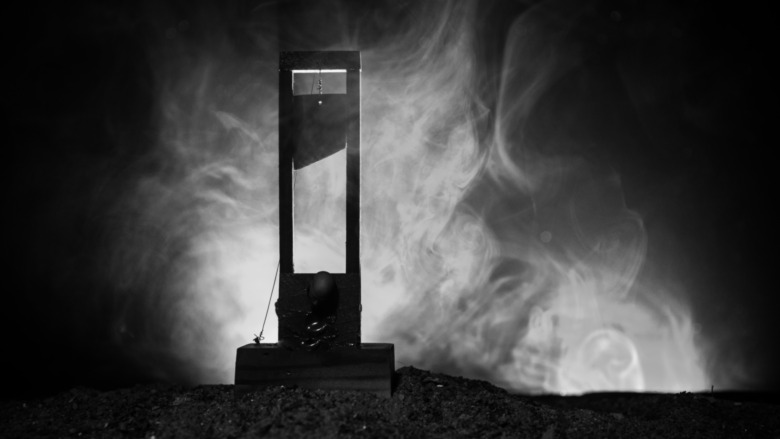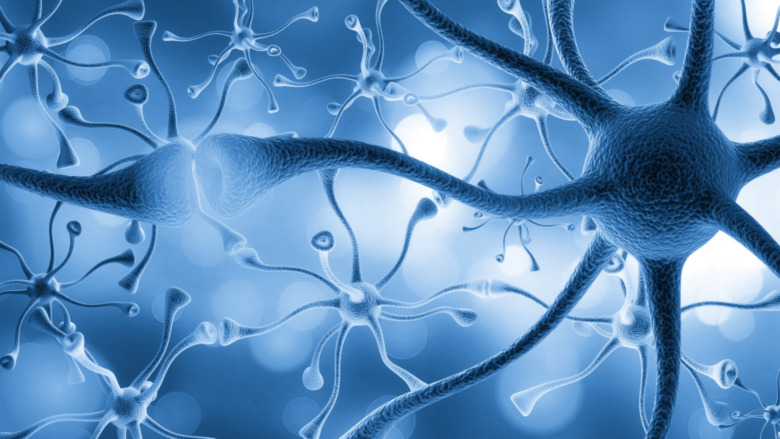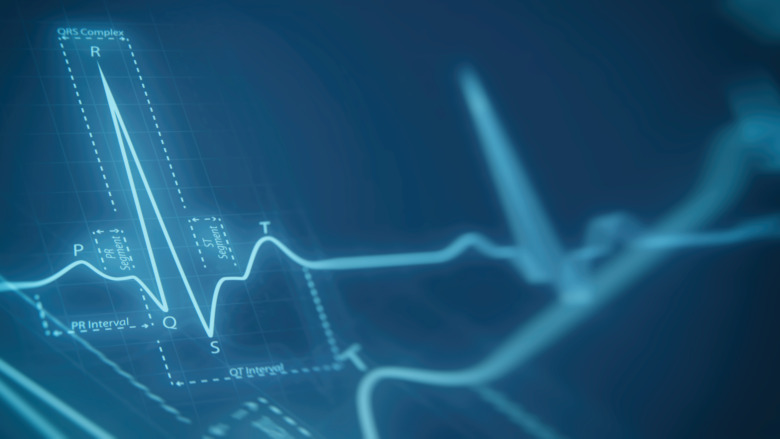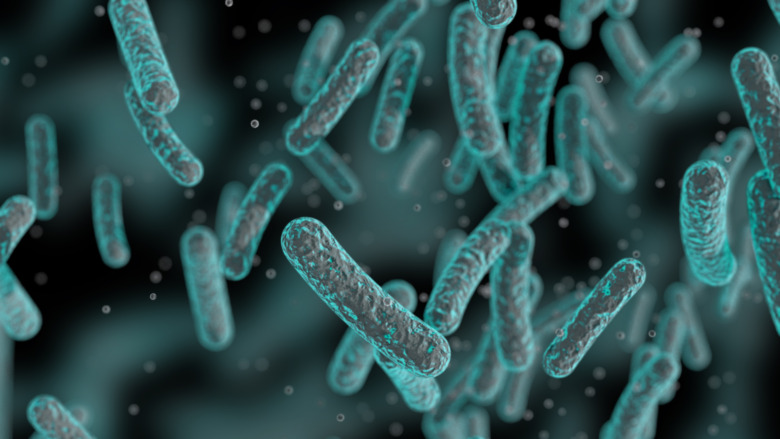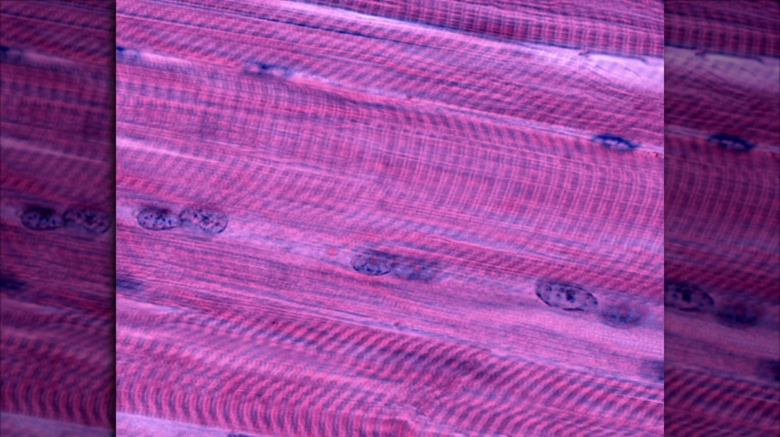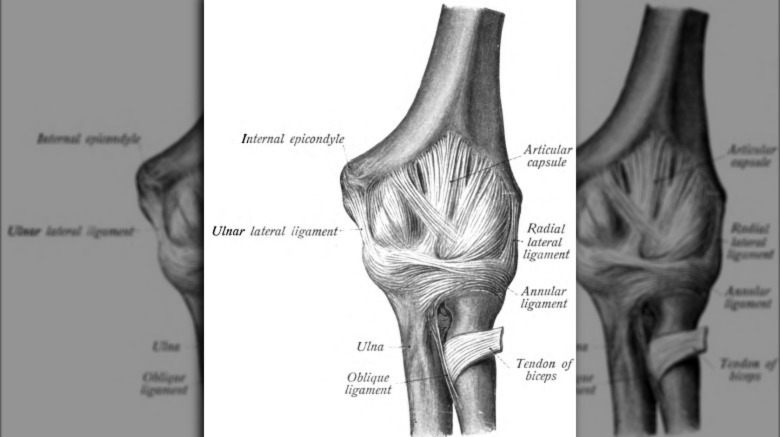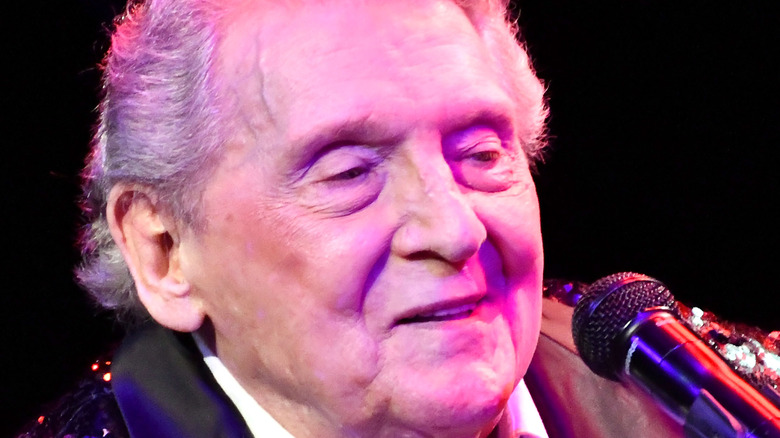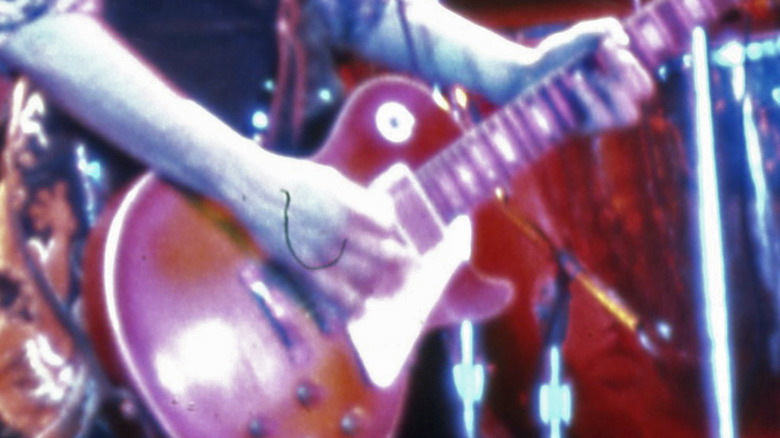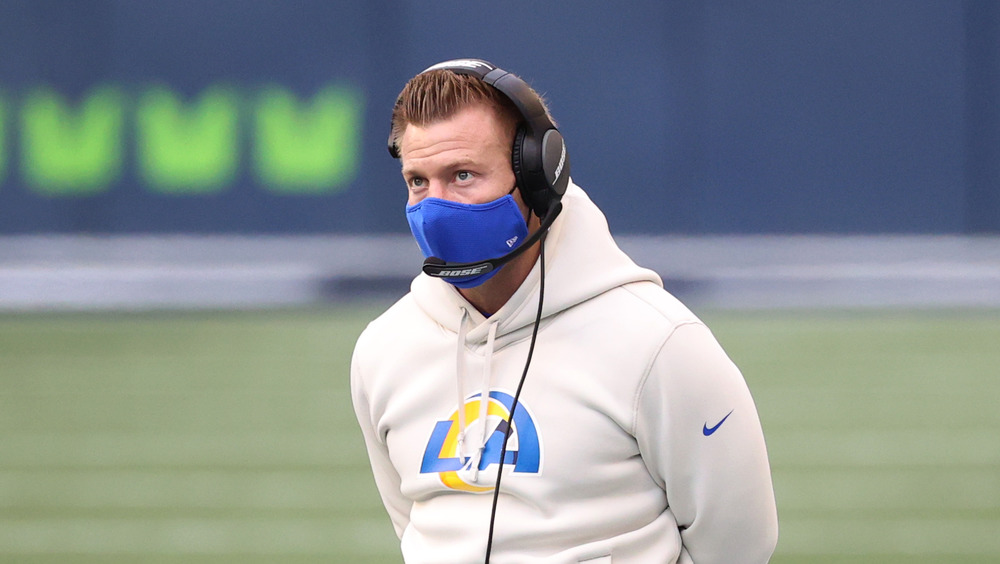
What It Means When You See A Dead Body Move
You’re wandering around, alone, in a darkened morgue, the air chill as goosebumps prickle across your skin. Your footsteps echo along the linoleum, and the harshly white light flickers up above, the room briefly plunging into darkness. Then, suddenly, something shifts in the corner, something metallic rattles, something creaks and moans. At the edge of your vision — movement. One of the cadavers — it starts to sit up, then all around the morgue, corpses begin writhing under their white sheets, deathly arms and legs coming back to life, and this can only be one thing. The zombie apocalypse. Or, maybe not.
Okay, admittedly, the entire morgue scene is purely fiction, classic horror movie set-up, that sort of thing. So, no, dead bodies aren’t going to be sitting up and walking themselves out of coffins and morgues and the like. But this little scene isn’t without at least a kernel of truth. And not in terms of the zombie thing — zombies in the science fiction sense are, well, fiction. But in reality, the science of death is really, really weird (and not entirely well understood). So what that means — dead bodies can actually still move on their own. There are actual, legitimate scientific reasons for why you might be able to see a dead body start moving around on its own. Granted, a lot of that research is still in its infancy, but it’s still a pretty wild topic nonetheless.
French Revolution horror stories
This entire thing about dead bodies moving around on their own really can sound fake, but there’s actually some historical precedent for it. Maybe it’s one you’ve heard of.
The time was the French Revolution, and the method of execution was, of course, the infamous guillotine. People would have their heads lopped off and were supposed to die instantly — that’s what would make the most sense. But then, all of a sudden, the decapitated head would suddenly move. ThoughtCo goes into some of those stories — a scientist who intentionally blinked at their students, or Charlotte Corday looking disgustedly at her executioner, only for him to slap her in the face.
In all fairness, the stories are probably exaggerated a lot — propaganda, or something like that. But there might be a bit of medical truth there, too. Let’s take the best-case scenario — if the blade was sharp and the cut really clean, then the head wouldn’t go through that much trauma (aside from losing a body, but this is all relative). In that case, there’s no reason why the brain wouldn’t technically still function, at least until blood loss actually led to death maybe 10 seconds later. So that decapitated head with the moving eyes? It might’ve still been alive.
But only alive in the most technical sense. Because consciousness is another question entirely. Maybe the person stayed conscious despite an instant loss of blood pressure, but it’s impossible to say for sure.
The brain's neurons still work without a body
Alright, so there are stories out there about the heads of guillotine victims still blinking and acting conscious despite being down an entire body, and there’s a bit of scientific logic to go along with that. But, really, that’s only anecdotal evidence and speculation at best. It’s not like scientists are just able to go chopping off human heads to see what happens.
That said, there’s actually some research here. It was just done on rats, not humans. News-Medical.Net summed up a study on the brain waves of rats pre- and post-decapitation. Basically, the brain activity of the rats before decapitation gave a normal baseline to compare to — normal thought and perception. Then the head was cut off, but those electrical signals didn’t actually stop. At least, not immediately. Things slowly died down after about 15 seconds (which seems to mean that the guillotine wasn’t anywhere near as instantaneous as it was said to be). Whether the rat was exactly conscious is debatable, but that decapitated head was still capable of things like sensory perception for some time after being without a body. The brain was still, technically, alive and firing electrical signals through the perfectly viable neurons.
And weirder still? The researchers suddenly got one last spike of brain activity around a minute after all of those electrical signals had seemingly stopped. Yeah, those neurons are still working, even when you’d think they should be dead.
Death is complicated in general
What technically counts as death? Is it when there’s no heartbeat, or when brain activity completely ceases? Because those are technically two different things, and the paper “Electroencephalographic Recordings During Withdrawal of Life-Sustaining Therapy Until 30 Minutes After Declaration of Death,” in The Canadian Journal of Neurological Sciences, explains that this is actually kind of a problem. The minutes surrounding death aren’t well understood, and that’s potentially concerning. Could a dead body still be conscious during organ donation?
Weird, but if decapitated rat heads show brain activity post-decapitation, it’s a valid question. So the team behind this paper did a case study, measuring brain activity and heart rate on four patients as they were taken off of life-support. Long story short — brain activity generally stopped before signals from the heart (so, not quite the same as the rat experiment). Basically, brain activity didn’t keep going on, and death isn’t just one thing.
But on top of that, the story gets weirder. Three patients’ brain activity decayed, but the fourth’s didn’t. Instead, for 10 minutes after being declared dead, there were still spikes in brain activity. News-Medical.Net explains that the brain activity looked similar to deep sleep, which is … strange. The team thought it was some external variable but couldn’t find any, ultimately settling on no explanation. It’s just a case study within a case study, but it’s bizarre.
No, the bodies didn’t move, but the point is — death is strange, so a moving corpse? Maybe not as fictional as it seems.
What's happening post-mortem?
So, to get into why a dead body might move around, it’s kind of helpful to understand what’s happening after death. (Basically, here’s the gross part that involves death and decay.)
Florida State University gives an overview of just what’s happening to the body after death. Rigor mortis is one of those things — essentially a body stiffening up after death. Over the course of about a couple days post-mortem, a body will go from limp, to stiff, to limp again, mostly as a result of a bunch of chemical reactions happening in the body. Acids end up building up in the muscles, making them go all stiff, and then over time, that stiffness just goes away (or is broken by other external factors).
There are other things, too. Algor mortis has to do with how the body cools down (and that cooling time also tends to coincide with other processes, like a film forming over the eyes). Livor mortis refers to the way blood ends up pooling within the body due to gravity and in the absence of a beating heart to actually pump it around.
All of those things happen within the first 48 hours or so. Decomposition sets in later, but the fact that rigor mortis affects the muscles could play into a dead body moving. In general, though, death is a pretty dynamic process.
Cadaveric spasm
The term “cadaveric spasm” really sounds like the perfect answer here. Maybe too perfect, because it’s a complicated term.
Technically, the term refers to almost instantaneous rigor. A paper by Paul J. Bedford and Michael Tsokos explains that, instead of stiffening about 20 minutes after death, certain muscles stiffen instantaneously, usually after suicides — which isn’t an explanation for “dead bodies moving” (plus, most of the so-called evidence is circumstantial).
That said, the term is usually used incorrectly. James R. Gill’s paper says that even medical dictionaries have defined it as an irregular (not immediate) onset of rigor mortis. And there, that’s a more helpful idea (even if the terminology is sort of off). A 1999 paper called “Postmortem Movements” tells a doctor’s story as he witnessed the toe on a dead body moving up and down. The presumed explanation at the end is that rigor had set in irregularly, and the muscles were stiffening unevenly, causing movement. A colleague of the author seemed to agree, too.
An article by The Sun mentions something similar — the twitching finger of a dead girl. Cadaveric spasm is used to explain that this might be a case of sudden rigor making the muscles spasm. Again, though, the definition is sort of different and is somewhat closer to the idea that muscles might still respond to external stimuli, causing twitching (via Forensic Medicine for Medical Students). So the exact meaning of this term seems debatable, but most of those meanings are relevant.
But what if the body moves … after a year?
Alright, time to get into some very new and very strange territory. Seriously, studies on bodies moving over the course of a whole year are basically nonexistent. So here’s a bit of a case study.
ABC News and MedicalNewsToday both talked to the team behind such research, particularly Alyson Wilson, the principal researcher for this study. She’d started out by using time-lapse photography to map the decomposition of bodies in the Australian environment but then ended up using that process to start mapping post mortem movement. So by taking pictures of a body over the course of 17 months, the team discovered that the body moved a lot. It’s not still like people (such as police detectives) tend to believe.
The arms especially are mentioned a lot. Both of them had started off at the sides of the body, but they didn’t stay that way. At one point, both of them were flung off to one side, and by the end, they were in another different position — one reaching out to the side and the other bent at the elbow, the hand almost touching the hip. That said, it wasn’t just the arms though. Wilson’s paper quantifies the movement of various different positions of all four limbs, all of which moved considerably over the 17 months, as did the head and neck. It’s all pretty strange and also pretty novel. There’s not much research like it.
The presence of insects may move a body
When it comes to explanations for why a body would move 17 months after death, there isn’t an exact explanation for it. Alyson Wilson makes some guesses in her paper “Quantifying human post-mortem movement resultant from decomposition processes,” though she also specifies that this research is something of a first. These are guesses, not hard facts.
When it comes to post-mortem movement, it sort of happens in stages, and so the explanations are somewhat time dependent. For example, Wilson mentioned that insects might be part of the reason for the movement. The study had been set up such that the body was basically encased in a cage — no large animals could come in and move things around, but bugs technically still could, and did. Around 13 days in, there were a lot of insects flying around in the cage, which is a totally normal process. How Stuff Works explains that it’s just a part of decomposition. Insects like flies and beetles seek out dead bodies to lay their eggs. It’s why you’d get a bunch of maggots in and around a dead body. Which, yes, is gross, but that’s just how nature is.
Wilson figures that all of those insects probably did play some small part in the overall movement of the body (especially in the early stages of decomposition, where more insects were present). It’s just an external factor and nothing especially weird, but it does make sense.
Bacteria and bloating also moves a body
Another one of those early stage reasons for why a body might move has to do with some of the chemical reactions going on inside of a corpse. Aftermath gives a rundown of just what those processes are. So, a dead body has no way of getting rid of excess waste products — things like carbon dioxide. Having all those waste products inside the body ends up causing cellular damage, and enzymes start leaking out, which just ends up making that process of decay go even faster.
Those enzymes will start breaking down soft tissues inside the body, which ends up releasing gases. But it’s not just the enzymes at work. Bacteria — as in, bacteria like the kinds in your stomach — will also release gases at the same time. The result of that is bloating, because those gases just fill up the inside of this dead body.
Alyson Wilson mentions this process in her paper. There was a lot of movement in the arms early on in the decomposition process (especially compared to the legs at the same time, and the arms later on). That would line up with when bloating happens, and so there might’ve been some gas build up in the stomach in particular. With the stomach being pretty central on the body, and just the process of bloating in general, the presence of gas could’ve caused the arms to shift around.
The body moves because muscles go limp
One of the things that happens to a body post-mortem is rigor mortis, the stiffening of the muscles because of the build up of acids. That’s usually something that goes on within the first few days after death, but the muscles don’t just stay stiff forever.
A paper by Stefan Pittner and other researchers goes into the way that muscles break down over time in a dead body. It comes down to this — muscles are basically just big groups of proteins, and those proteins are pretty well understood. And when muscles are just left out to decompose — as in a dead body — those proteins break down into smaller compounds. On the small scale, the proteins are breaking down, and so, on the larger scale, the muscles are sort of falling apart.
That’s another thing that Alyson Wilson mentions as a potential reason for some of the movement seen in her study. The head of the dead body began tilting to the left side about two weeks into the study. She hazarded a guess that it was potentially due to the muscles in the neck going through that degradation process, relaxing and loosening, which pulled on the head and made it flex to one side.
Ligaments drying out might move a body as well
Alright, so here’s a little bit of an anatomy lesson for all of this to make sense, courtesy of NCBI. Everyone knows about muscles and bones and generally what they do in terms of movement. But neither muscles nor bones would be able to do anything without some literal connective tissue — tendons and ligaments. Ligaments in particular are there to bind together all of the parts, acting like ropes to actually make sure all the bones (and internal organs, and other things) stay where they’re supposed to be.
So, why do ligaments matter here? Well, in the later stages of decomposition, the human body tends to dry out, and Alyson Wilson proposes that, importantly, the ligaments are drying up and contracting (as are the muscles). That process ends up making the joints contract, too, which would explain why the arms seemed to very slowly flail around. After all, the ligaments are all connected to the bones. When they start drying up and shrinking, they’re going to also pull on the bones in the arms — hence, movement, like the arms raising up or bending at the elbow. It’s really kind of like a puppet — you pull on the strings, and that makes the arms or legs move.
Again, though, Wilson mentions that this is just her theory. There’s more research to be done to see if that’s really the case.
Water might make a difference
One of the things that Alyson Wilson also mentions in her study is that the movement they observed wasn’t uniform for the entire body. Both arms moved considerably more, rising up and bending, while the legs just bent at the knee. And even then, the right arm moved up higher — and generally traveled more distance — than the left arm, which bent so that the hand pointed toward the hip.
The exact reason for this isn’t entirely known. Wilson proposed that the difference in the arms could’ve been because of handedness. The actual handedness of the donor body wasn’t known, but if they were right handed, then the greater movement could’ve been because of more developed muscles in the right arm. The muscles would be stronger and have a higher moisture content compared to the left arm. Assuming that the movement is generally just due to moisture loss in the muscles and ligaments, then the ability to lose more moisture could’ve led to more dramatic movements.
There’s a similar argument for the legs. Legs generally have more muscle mass than the arms, so, especially in the earlier stages of decomposition, the arms are losing more moisture, more quickly, and from a smaller amount of muscle. Comparatively, even if the legs are losing the same amount of moisture, there’s more muscle that would have to move. In the end, the more dramatic loss of moisture might’ve also led to more dramatic movement.

The Biggest Brian Shaffer Theories: What Really Happened?
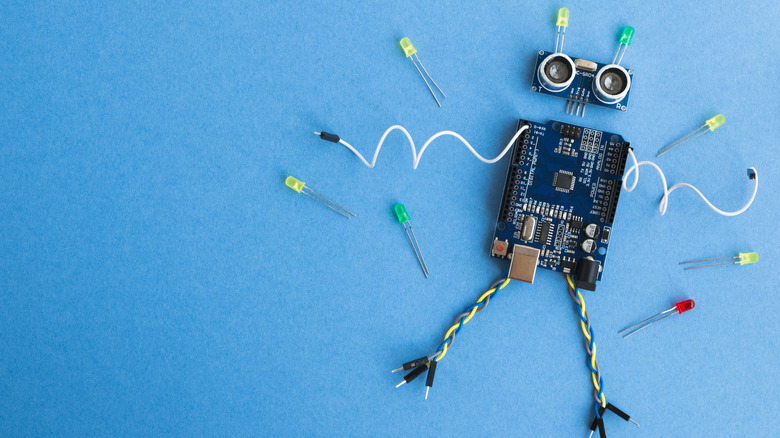
The Real Reason A Bot Read Romance Novels

The Weird History Of The Garden Cemetery Movement
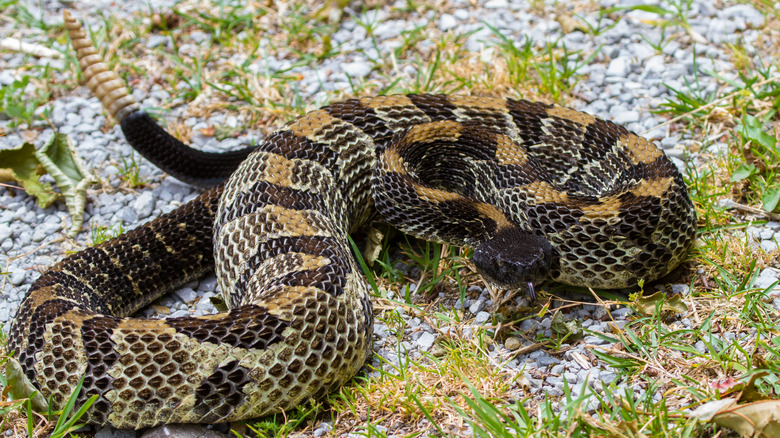
The Sad Truth About The Man Who Advocated For Snake-Handling Rights
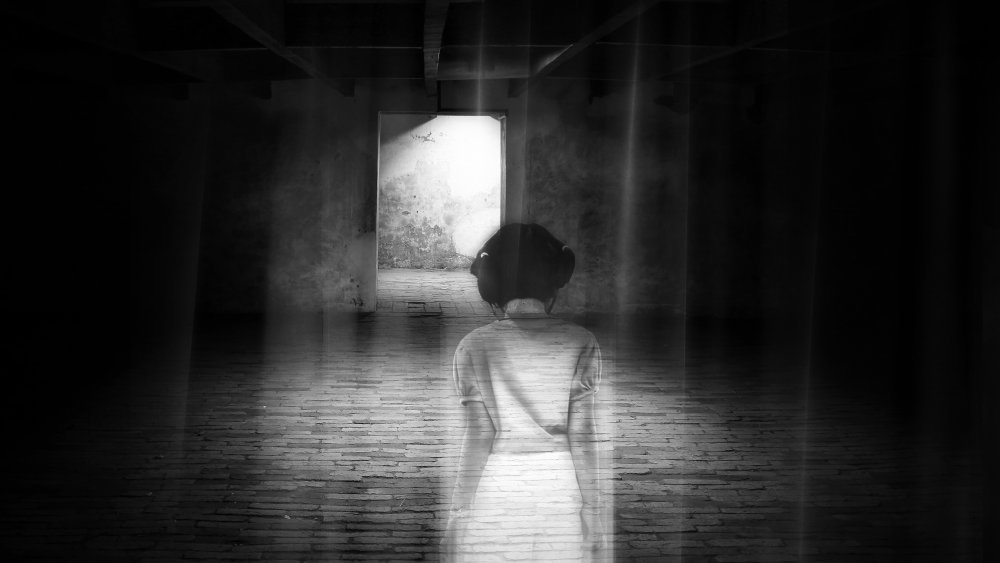
The Creepiest Stories Of Child Ghosts

The Truth About The Superman Curse

Bumblebee Decline Points To 'Mass Extinction', Study Says

The Fart That Caused 10,000 Deaths

Cats That Are Almost Bigger Than Their Owners

Shady Secrets McDonald's Doesn't Want You To Know
